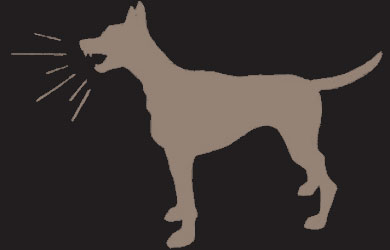1. Those who object to portraits of Jesus should not have various Christological heresies assigned to them. It is as if a ham-fisted painter tried a portrait of my best friend, and I complained the painting had no soul. The painter could not reply that I was saying my friend had no soul. But we are talking about his painting, not my friend. We are talking about the painter’s artistic inadequacies, not my friend’s soulless inadequacies, which is probably why the painter keeps trying to change the subject.
2. The historic doctrinal errors of the first wave of iconoclasts cannot be assigned to the Protestant objections to them, any more than the errors of iconoclastic Islam can be assigned to Protestants. At the same time, sin begets sin, and sin invites overreaction. The errors later ratified by Second Nicea were and are responsible for the judgments brought in by Islam. Christian idolaters lost what the gospel had gained. Protestants understand the overreaction, just as they understand the provocation of it. That does not make them participants.
3. The Incarnation was a momentous event, but provides no new argument for icons that didn’t exist before. There were plenty of Old Testament theophanies concerning which the current arguments for icons would work equally well. But still the Jews did not use images of the Lord walking in the garden with Adam, or of Abraham serving dinner to the Lord and two angels, even though all such events were not visions, and were photographable. They were visitations, and to deny the lawfulness of portraying the visitation is not to deny the visitation. It is to affirm it. To pick up a brush with a claim you can reproduce what happened is to deny what happened.
4. We don’t know what Jesus looked like, thank God. There are no descriptions of Jesus in the course of His earthly ministry from which we may take any kind of direction. Had cameras been invented at that time, we would no doubt have some interesting discussions about that, but they would not be the discussions we are having now. Our discussions now concern the work of untethered and uninspired imaginations, and not a record of what actually happened.
5. Speaking of first century cameras, the Lord in His great mercy to us kept them from being around at the time of the Incarnation. But had they been invented, I am prepared to say that Mary could lawfully have taken her family album out from time to time to remind herself of the Lord’s presence with them, just as we do with our photos. But if she had had one of the photos enlarged at Kinkos, and set up a shrine for it, then that would have been wicked.
6. The descriptions of the Lord in glory that we do have (hair white like wool, feet as burnished bronze, flaming eyes, and a sword coming from His mouth) are word paintings intended to serve the only purpose we need to have, not to provide grist for another purpose.
7. There is a difference between a painting that attests to the fact of the Incarnation (e.g. Road to Emmaus) and an attempt at a portrait. To deny the former as lawful could lead some to draw false conclusions about the Incarnation (i.e. that Jesus never quite “touched down,” some form of doceticism). But attempts to capture the reality of the personality of Jesus in a painting, or by an actor in a Jesus film, or by a novelist in attempted dialogue, reveal next to nothing about Jesus, and reveal a great deal of the manifest coxcombery of artists who are not nearly as good at their craft as they think they are. It makes me think less of Jesus in an edifying way, and more about how some artistic types could spend a couple days in the stocks in an edifying way. BBC producers notwithstanding, a vaudeville cloth lion is not Aslan.
8. God said not to do this in the Second Commandment (Ex. 20:4-5). Convoluted arguments that “we can too do it” need to spend at least some time showing what is being prohibited by this commandment, instead of constantly arguing what is still allowed by it. I understand that blue pomegranates in the Temple curtains are not prohibited by the Second Word. What is prohibited? What tendency in the natural man is being affronted by this prohibition? Unconverted men want to lust, they want to steal, they want to hate, and so God speaks His holiness into a sinful world. So what is it that unconverted men want to do with images? What holy word does God speak into a sinful, religious world? He says not to bow down before an image in religious devotion.
9. The commandment to honor parents is the first one with a generational promise, and which the apostle Paul points to (Eph. 6:2-3). But it is not the first commandment with a generational rider. The Second Word says this — that those who bow down to images are guilty of “iniquity,” and that their hatred of God will be visited to three and four generations (Ex. 20:5). In our worship of the Lord, we delight to include our children together with us in our worship, and this includes bringing them to the Table. But it is not enough to just include your children. What are you including them in? We do not bring them into a worship service with graven or painted images in it because we do not want a millstone tied around our stiff necks (Matt. 18:6). We do not want to be thrown into the depth of the sea. We want to present ourselves to the Lord at the last day, together with the children He has given us.
10. Idolatry is a grievous and soul-threatening sin, and not a denominational distinctive. An ability to follow and understand these arguments is spiritually given, and cannot be apprehended by those who are still natural men. This is why the new birth is absolutely necessary.


You call the veneration of icons “idolatry”. Do you imply that those who worship this way are in fact worshipping something besides Christ? The image itself perhaps? Or could it be that they worship the risen Christ sitting at the right hand of the Father while using an image (one of thousands) to aid- in the same way they might use a hymn, candle, feast, or cross? It seems to me that the 2nd commandment was speaking of worshipping false gods. But when I see an Icon of Christ, Pantocrator I don’t 1) feel drawn to worship the work of… Read more »
Why does it seem the 2nd commandment was speaking of worshipping false gods, when in fact it tells us not to make a graven image of anything in heaven above, you know, where the true God is?
I guess the Westminster Confession got this one wrong?